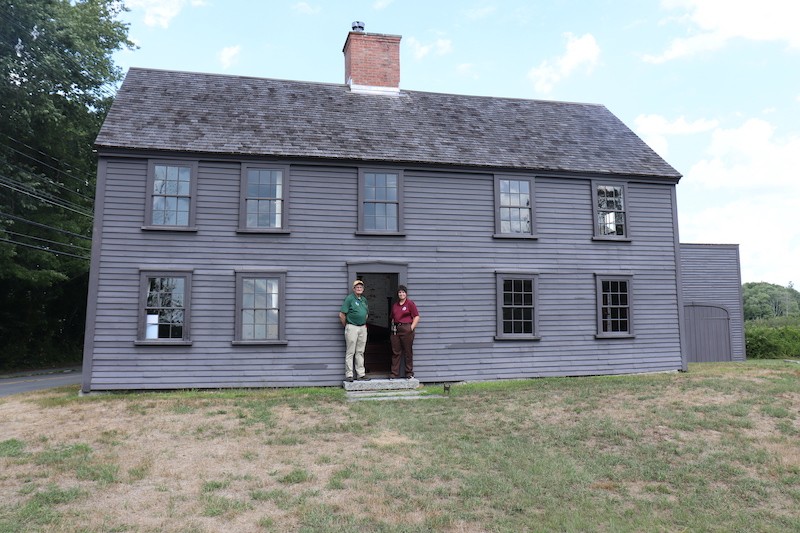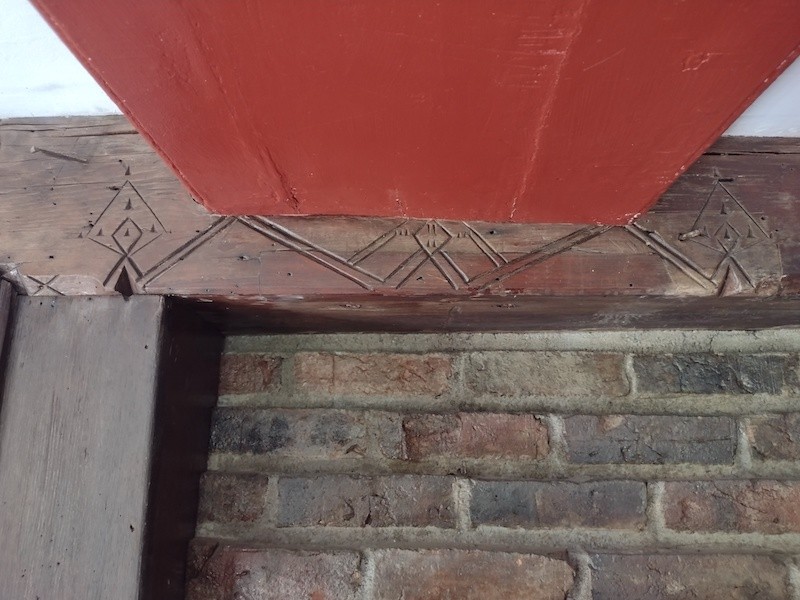Opening the Meriam House
Written by: Eva Parra
Opening the Meriam House was my main project at Minute Man National Historical Park. I started off and never really stopped researching the structure. It felt like every day, a visitor would ask a question that would lead to a new discovery. I also had the help of two volunteers, Ed Wirtanen (pictured) and Franny Sacco, who guided visitors through the home with me.

Myself (right) and a volunteer Ed Wirtanen (left) my first weekend opening the Meriam House for visitors.
The Meriam House was built in 1705 by Joseph Meriam and originally only had one room upstairs. The house would be expanded upon many times in the almost 300 years that it was a personal residence. It was lived in by four generations of the Meriam family, two of the Burke family, and one of the Ingraham family, all the way up until 1990. The fact that the house was so recently lived in usually surprised visitors, but it led many to think about themselves living in the house or how similar their house is.
In 1775 the house was owned by Nathan Meriam, where he lived with his wife, Abigail, and their seven children, ages 11 to 29. The Meriam House is the only surviving witness to the battle that started in the area as British regulars passed over a bridge on their way out of Concord back to Boston following a confrontation at the North Bridge, where the famous “shot heard around the world” occurred. The British soldiers pulled in their flankers, who had been protecting the main column of soldiers, to cross the bridge. As the last of the soldiers crossed the bridge, colonial militiamen are said to have fired upon the British soldiers (although there is some contention about who fired first, it is likely the colonists did), beginning a running battle back to Boston.

Engraving at Meriam House
One of my favorite features in the house is an engraving on a beam above the fireplace. It’s still not entirely clear what is engraved. The beam is original to the house, and the intersecting red beam was encased in 1820, covering the top of the engraving, so we know it was created between 1705 and 1820. What I love about it is a section of the beam had to be replaced during the Ingraham’s residence in the house (as can be seen over the center of the design), and they took the time to recreate the design. People often lament that the house is not entirely original, but I think what makes the house special, aside, of course, from its connection to the battle there, is the ways its inhabitants valued its history. While yes, much of the house is not original to 1705 or even 1775, people made decisions about the space they lived in and chose to protect even just this sliver of history.